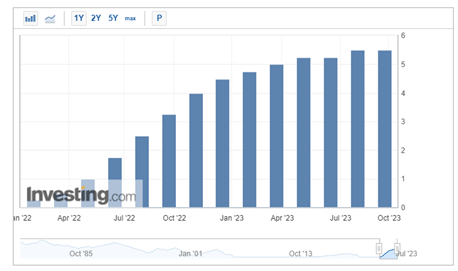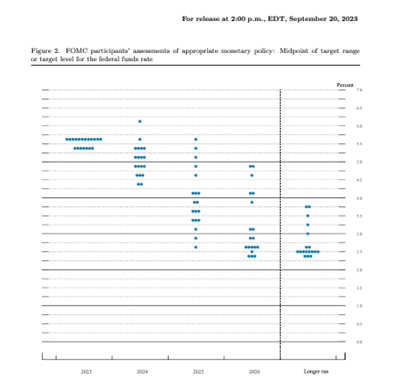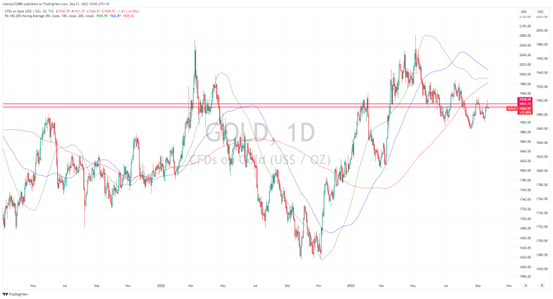市场资讯及洞察
.jpg)
在使用TradingView 的Pine Script编写策略或指标时,变量命名是代码规范与可读性中至关重要的一环。一个清晰、规范的命名不仅能让脚本结构更直观,也方便日后维护和优化。尤其是在复杂策略中,往往需要同时处理多组价格数据、信号条件与参数设置,若命名随意或重复,极易导致逻辑混乱或计算错误。良好的命名习惯应当遵循“见名知意”的原则,使变量名称能够准确反映其功能或含义。
本文将从变量命名的基本原则、常见命名方式及实用建议出发,探讨变量命名的重要规则。
1. 变量命名的基本格式:
[<declaration_mode>] [<type>] <identifier> = <expression> | <structure>
其中符号“|”表示“或”,方括号“[]”内的内容可有可无。
<declaration_mode> 表示变量的声明模式,可为 var、varip,或省略。
<type> 为可选的类型关键字,可带限定前缀。大多数情况下无需显式指定类型,详情可参考类型系统页面。
<identifier> 是变量名。
<expression> 可以是字面值、变量、表达式或函数调用。
<structure> 则可为 if、for、while 或 switch 等结构。
2.下划线在pine script的特殊含义
在声明变量时,可以使用单个下划线 _ 作为变量名。赋值给 _ 的内容无法被访问或引用。你可以在脚本的任意位置、任意次数地为 _ 赋值,即使当前作用域中已存在同名赋值也不会产生冲突。
这种写法常用于处理不需要使用的返回值,尤其是在函数返回元组时。例如,在编写布林带(Bollinger Bands)脚本时,如果只需要上轨和下轨而不关心中线,就可以用 _ 来忽略多余的返回值,使代码更简洁明了。
例如:
[_, bbUpper, bbLower] = ta.bb(close, 5, 4)
3. 变量重新赋值
在 Pine Script 中,变量重新赋值(variable reassignment)是通过 := 运算符 实现的。与普通的变量声明不同,重新赋值只能在变量已经被声明并且拥有初始值之后进行。也就是说,必须先使用 = 定义变量及其初始值,之后才能使用 := 对该变量进行更新或修改。变量重新赋值在脚本计算中非常常见,尤其是在需要根据条件动态更新变量值的情况下。例如,当某个变量在全局作用域(global scope)中被声明,而在函数、循环或条件语句等局部结构(local block)中需要为其赋予新的值时,就必须使用 := 进行重新赋值。
4. 变量声明的三种方式
在 Pine Script(TradingView 的脚本语言) 中,变量的声明方式决定了它在脚本执行过程中的“生命周期”和“持久性”。Pine Script 中主要存在三种变量命名方式:默认变量(on each bar)、var 持久变量,以及 varip 实时持久变量。三者在数据更新、跨K线传递及实时刷新时的行为各不相同,理解这些差异是编写稳定高效脚本的关键。
首先,默认变量(on each bar) 是 Pine Script 的标准声明方式。当你直接写出 x = close 这样的语句时,Pine Script 会在每根K线计算时重新执行这行代码,变量只在当前K线的作用范围内有效。当新的K线生成时,变量会被重新赋值并覆盖之前的结果。换句话说,它并不会“记住”上一根K线的状态。这种变量适合用于即时计算,比如均线、RSI、布林带等指标的数值处理,不需要保存历史信息。
其次,var 关键字用于声明“持久变量”(persistent variable),它只在脚本第一次加载时初始化一次,之后在每根K线计算中都会保留其上一次的值。也就是说,var 变量具有跨K线记忆的特性,非常适合用于需要累积或记录状态的逻辑。例如,可以使用 var count = 0 来建立一个计数器,每当满足条件时累加一次,而该值会在接下来的所有K线上继续保持,不会被重置。通过 var,脚本能够在不同K线之间传递数据,实现更加复杂的交易逻辑,如连续信号识别、状态标记、仓位控制等。
最后,varip(var intrabar persistent) 是一种更高级的变量形式。它与 var 类似,同样能在不同K线之间保留数据,但它还具备“实时K线内持久性”。也就是说,当当前K线尚未收盘、价格仍在变动时,Pine Script 会在每次实时刷新中多次执行脚本,而 varip 能够在同一根K线的多次计算中保留之前的值。相比之下,普通 var 在实时K线内每次更新时仍会重新计算,而不会累积。这使得 varip 在处理高频数据、逐tick逻辑或实时监测信号时尤为有用,比如在检测价格突破瞬间或计算实时成交量变化时,可以通过 varip 追踪K线形成过程中的细微变化。
联系方式:
墨尔本 03 8658 0603
悉尼 02 9188 0418
中国地区(中文) 400 120 8537
中国地区(英文) +248 4 671 903
作者:
Michael Miao | GO Markets 悉尼中文部


热门话题美东时间9月20日周三,美联储货币政策委员会FOMC会后宣布,联邦基金利率的目标区间仍为5.25%到5.50%,将政策利率保持在二十二年来高位。

继今年6月后,这是美联储本轮紧缩周期内第二次未延续前次会议的行动继续加息。本次暂停加息符合市场预期。芝商所(CME)的工具显示,在美联储决议公布后前一日,本周二美国联邦基金利率期货交易市场预计,美联储本周按兵不动的概率接近100%,11月加息的概率不到30%,12月加息的概率约为40%。

尽管加息下的物价已开始如期下行,但是通胀卷土重来的担忧在近期油价飙升下加剧。目前美国方面经济数据仍有韧性,对于是否结束本轮加息周期仍然未能给出明确方向。因此美联储本次维持利率更多出于等待11月和12月更多经济数据,从而更好的决定下一次利率决策。会后美联储官员预期未来利率水平点阵图透出整体偏鹰,12名联储官员、六成以上官员预计今年内还有一次加息,多数都预计今年内还有一次加息。

联储对明年的展望明显更为鹰派,对市场产生扰动,货币市场对11月加息的押注一度从29%升至31%。截至最新,芝商所(CME)的工具显示28.4%概率认为11月将加息25bp。

受消息影响,美元短线暴涨并逆袭当日跌势,黄金则自日内高位回撤逾10美元。美元指数由104.75一线迅速拉升40逾点至105.20附近,黄金则下滑数美元至1939。美元指数自7月99美元低点反弹以来,在200日均线之上形成稳步上涨趋势,涨幅已超5%。从昨日美联储利率决议的市场反应来看,美元短期内仍将延续强势,下一阻力位关注今年3月未能 突破的前高105.48美元。

黄金价格目前正挣扎在前阻力区间1932.71-1938.59下方,50日、100日及200日移动平均线都位于该阻力区间的下方,黄金突破上行较难。如果金价涨破这些均线并进一步上涨,下一目标将看向1885-1893以及更高的1900。长期来看,黄金看涨,近期黄金已经显示出易上行,缓下跌的态势。然而黄金上攻的势头被昨日偏鹰的美联储压制,短期内预计多空争夺,可在区间内寻找交易机会。

免责声明:GO Markets分析师或外部发言人提供的信息基于其独立分析或个人经验。所表达的观点或交易风格仅代表其个人;并不代表GO Markets的观点或立场。联系方式:墨尔本 03 8658 0603悉尼 02 9188 0418中国地区(中文) 400 120 8537中国地区(英文) +248 4 671 903作者:Cecilia Chen | GO Markets 分析师


热门话题在上周,新的苹果产品发布,这次发布的新品在技术方面与上一代iPhone 14相比并没有太大突破。iPhone 15 有四个版本:两个基础模型和两个高端模型。高端的iPhone 15 Pro和Pro Max获得了最多的升级,包括最新的A17处理器,该处理器由台湾半导体制造公司(TSM)生产,采用3纳米工艺制造。这两款Pro模型还采用了全新的设计,有钛合金框架和一个可自定义的“动作按钮”,该按钮取代了之前的静音开关,并可配置以启动相机、语音备忘录等应用程序。

这些新款智能手机将于9月22日上市。基础模型的起售价分别为799美元和899美元,与其前代产品相同。而顶级的iPhone 15 Pro Max则价格上涨了100美元,起售价为1,199美元,并增加了存储容量。对于这次发布会,分析师的看法不一。有些认为,虽然这次更新有些令人失望,但还是足以吸引长期的苹果用户。另一些分析师则对苹果股票给出了较高的评级和价格目标。说到产品本身,本次产品虽然有着A17pro的芯片加成,理论性能高于A16处理器 10%左右,但是却出现了一个不大却有不小的问题。那就是功耗问题,这代功耗很高,导致更早的过热降频发生,那么之前和大家聊过的散热问题,依旧存在,而且,这代可能更为明显。对于CPU性能来说可谓是遥遥领先,不过GPU性能方面居然没有干掉骁龙8 Gen2,属实没有想到。同时新代芯片将支持MetalFX超分以及加入光追支撑,越来越往桌面端进行靠齐了。相应的就是功耗将来可能剧增。简单的道理就是,苹果虽然目前开始出现类似“挤牙膏”行为,虽然每次芯片都有进步,但是实际运动到生产力方面,其实还是性价不高。也没有出现太多新的东西,没有实质性的一些突破。再加上这次3nm新工艺没有想象中那么大的进步,对于未来手机端半导体进步出现了一个小小的问号。最后的一个问题就是苹果生态目前其实很难以打破。说回股价,本次新品上市,对于股价反而有一定的影响。当日在股市上,苹果股票下跌了1.2%,收盘价为174.21美元。周二,苹果股票下跌了1.7%,收盘价为176.30美元。目前处于一个179价位附近的震荡中。

(source:Tradingview)首先就是在新品本身上,没有太大跨时代的进步,但是依旧没有很高的性价比。新的3nm芯片似乎也没有想象中那么强的性能提升。其次就是,苹果在中国市场的主要竞争对手华为推出了新的智能手机Mate 60系列,凸显了其在美国制裁下的韧性。并且很有可能使得苹果在中国市场的销售造成阻碍。此外,苹果目前正面临连续三个季度收入同比下降的局面,引发了人们对该公司未来发展轨迹的担忧。综合来说,短期来看苹果股价存在一个承压的阶段,新产品的销量同样也引发了不少投资者的担忧。那么未来苹果应该仔细斟酌战略规划,科技创新为主的公司希望不要走到“挤牙膏”的老路上。免责声明:GO Markets分析师或外部发言人提供的信息基于其独立分析或个人经验。所表达的观点或交易风格仅代表其个人;并不代表GO Markets的观点或立场。联系方式:墨尔本 03 8658 0603悉尼 02 9188 0418中国地区(中文) 400 120 8537中国地区(英文) +248 4 671 903作者:Neo Yuan | GO Markets 分析师


Options trading offers a multitude of strategies that cater to various market conditions and risk appetites. One such strategy that traders often employ is the "Long Butterfly Spread." In this article, we will delve into the intricacies of the Long Butterfly Spread, exploring its components, mechanics, and potential advantages. At its core, the Long Butterfly Spread is a neutral options strategy that traders utilize when they expect minimal price movement in the underlying asset.
It involves using a combination of long and short call or put options with the same expiration date but different strike prices. This strategy is particularly useful when you anticipate that the underlying asset will remain relatively stable within a specific range. To construct a Long Butterfly Spread, you'll need to execute three transactions with options contracts.
Let's break down the components: Buy Two Options: The first step involves buying two options contracts. These contracts should be of the same type, either both calls or both puts, and share the same expiration date. One of these options should be an "in-the-money" option, while the other should be an "out-of-the-money" option.
Sell One Option: The next step is to sell one options contract, which should be positioned between the two contracts purchased in the previous step. This sold option should have a strike price equidistant from the two bought options and, like them, should also have the same expiration date. Now, let's understand the mechanics of the Long Butterfly Spread and how it can generate profits: Profit Potential: The Long Butterfly Spread is designed to profit from minimal price movement in the underlying asset.
It thrives in a scenario where the underlying asset closes at the strike price of the options involved in the strategy at expiration. In such a case, the trader reaps the maximum profit, which is the difference between the two middle strike prices minus the initial cost of the strategy. Limited Risk: One of the key advantages of the Long Butterfly Spread is its limited risk profile.
The maximum potential loss is capped at the initial cost of establishing the strategy, making it a prudent choice for risk-averse traders. This risk limitation is due to the fact that the trader is simultaneously long and short options, which mitigates the potential for substantial losses. Breakeven Points: In a Long Butterfly Spread, there are two breakeven points.
The first breakeven point is below the lower strike price of the strategy, and the second breakeven point is above the higher strike price. As long as the underlying asset closes within this range at expiration, the trader will either realize a profit or minimize their loss. Implied Volatility Impact: Implied volatility plays a crucial role in the Long Butterfly Spread.
When implied volatility is low, it reduces the cost of the strategy, making it more attractive. Conversely, when implied volatility is high, the strategy's cost increases, potentially affecting the risk-reward ratio. Therefore, traders should carefully assess implied volatility before implementing this strategy.
Time Decay: Time decay, also known as theta decay, can work in favor of the Long Butterfly Spread. As time passes, the value of the options involved in the strategy erodes. This erosion can benefit the trader if the underlying asset remains within the desired range.
However, if the asset moves significantly, it may offset the time decay benefits. Scenario Analysis: Let's consider a practical example to illustrate the Long Butterfly Call Spread. Suppose you are trading Company XYZ's stock, which is currently trading at $100 per share.
You anticipate that the stock will remain stable in the near future and decide to implement a Long Butterfly Call Spread. Buy 1 XYZ $95 Call option for $6 (in-the-money). Sell 2 XYZ $100 Call options for $3 each (at-the-money).
Buy 1 XYZ $105 Call option for $1 (out-of-the-money). The total cost of this strategy is $1 (6 - 3 - 3 + 1). Now, let's examine the potential outcomes: If Company XYZ's stock closes at $100 at expiration, you will achieve the maximum profit of $4.
The $105 call option will expire worthless so you will lose the $1 you paid, the $95 call option will make a net loss of $1 ($6 cost -$5 profit) and two $100 call options will be worth $3 each. If the stock closes below $95 or above $105, the strategy will result in a maximum loss of $1, which is the initial cost. Any closing price between $95 and $105 will yield a profit or loss within this range, depending on the precise closing price.
In conclusion, the Long Butterfly Spread is a versatile options trading strategy that offers limited risk and profit potential in stable market conditions. It is a strategy that requires careful consideration of strike prices, implied volatility, and time decay. Traders should always conduct thorough analysis and risk management before implementing any options strategy, including the Long Butterfly Spread.
When used judiciously, this strategy can be a valuable addition to a trader's toolkit for capitalizing on low-volatility scenarios.


In the intricate realm of financial markets, options trading stands as a dynamic and multifaceted approach to profiting from market dynamics. Among the diverse range of options instruments, the call option emerges as a fundamental tool. In this article, we will delve into the concept of call options, examining their definition, mechanics, and significance in the context of options trading.
A call option fundamentally operates as a financial contract, conferring a valuable right upon the holder. This right, however, is not accompanied by any obligation to purchase a predetermined quantity of an underlying asset at a specific price known as the strike price, within a predetermined timeframe known as the expiration date. This underlying asset can encompass a wide array of financial instruments, including but not limited to stocks, bonds, commodities, or currencies.
The primary attraction of call options stems from their potential for substantial leverage. In contrast to direct ownership of the underlying asset, which necessitates the full market price, obtaining a call option requires the payment of a premium. This premium constitutes only a fraction of the actual asset cost, thereby allowing traders to control a more substantial position size with a relatively modest upfront investment.
Nevertheless, it is crucial to acknowledge that leverage can magnify both gains and losses, underscoring the critical importance of prudent risk management when trading call options. To comprehend the concept of call options fully, one must dissect their key components. At the core of a call option lies several essential elements: Underlying Asset: Call options derive their value from an underlying asset.
This asset could encompass anything from stocks to indices, commodities, or other financial instruments. Strike Price: The strike price serves as the anchor point for a call option. It represents the price at which the call option holder can exercise their right to purchase the underlying asset.
Importantly, the strike price remains constant throughout the option's lifespan. Expiration Date: Every call option carries a predetermined expiration date. Beyond this date, the option becomes void if not exercised.
These options can have varying expiration periods, ranging from a matter of days to several months or even longer. Premium: To acquire a call option, the buyer must pay a premium to the seller, also known as the option writer. The premium serves as the cost of obtaining the right to buy the underlying asset at the strike price.
To illustrate the mechanics of a call option, consider the following example: Suppose an investor believes that XYZ Company's stock, currently trading at $50 per share, will experience an upswing in the next three months. They decide to purchase a call option on XYZ with a strike price of $55 and a premium of $3. This call option grants the investor the right to buy 100 shares of XYZ Company at $55 per share at any point before the option's expiration date, set three months from the present.
Now, let's explore two possible scenarios: Scenario 1 - The Stock Price Rises: Should the price of XYZ Company's stock surge to $60 per share before the option's expiration, the call option holder can opt to exercise their option. This allows them to purchase 100 shares of XYZ at the agreed-upon strike price of $55 per share, despite the current market price of $60. This transaction yields a profit of $5 per share ($60 - $55), minus the initial premium of $3.
The investor ultimately realizes a net gain of $2 per share ($5 - $3), amounting to a total profit of $200 ($2 x 100). Scenario 2 - The Stock Price Stays Below the Strike Price: Conversely, if XYZ Company's stock price remains at or below the $55 strike price, or even declines, the call option holder is under no obligation to exercise the option. In such cases, the option expires worthless, and the maximum loss for the investor is limited to the premium paid, which in this instance amounts to $300 ($3 x 100).
It is essential to note that not all call options are exercised. In fact, many call options expire without being exercised, especially when the underlying asset does not move favorably or when exercising the option would result in a loss exceeding the premium paid. The decision to exercise or not to exercise a call option lies entirely with the option holder, adding a layer of flexibility to this financial instrument.
Call options find utility across a spectrum of investment strategies. Beyond speculative trading, they can serve as effective hedging tools. For instance, an equity investor concerned about a potential market downturn might purchase call options on an index to offset potential losses in their portfolio.
This strategy allows them to profit from the call options if the market experiences an upswing while limiting their losses if it takes a downturn. In conclusion, call options represent a pivotal component of options trading, offering traders and investors a powerful mechanism to capitalize on upward price movements in various assets. By grasping the fundamental elements of call options, including the underlying asset, strike price, expiration date, and premium, individuals can make informed decisions and implement strategies to align with their financial goals.
However, it's imperative to bear in mind that options trading involves inherent risks, necessitating proper education and risk management strategies before venturing into these markets.


热门话题我记得刚来澳洲的时候,发现澳洲人办事真的好慢,完全没办法跟中国的深圳速度相比。那时候办一张银行卡都需要一周才能收到,当然,现在也没好多少。但是随着待在澳洲的时间越来越多,发现澳洲人注重的是快乐和幸福。工作投入的时间和产出要符合他们的预期,并且能够提高生活品质。当然,也有很多人没有能力通过工作实现自己的生活预期,反而选择在澳洲躺平,领取低保。根据2023年7月最新时薪数据显示,澳洲的最低时薪已经达到23.23澳币。并且如果他们不享受带薪假期,那么最低工资应该是每小时29.04澳币。大家想要了解自己行业的最低薪资标准,可以使用下面的网站自己计算:https://calculate.fairwork.gov.au/FindYourAward我不知道大家有没有一个问题:努力勤奋的中国人,在中国的企业里,兢兢业业的最低工资时薪为18元人民币,也就是4澳币。而澳洲马路上举个牌子的也可以时薪80澳币。同样的付出,20倍的收入差距,究竟哪里出了问题?

中国企业的工作文化,灌了很多鸡汤,却很少见到幸福的员工和老板。中国文化浓郁的企业里,经常可以感受到:一个人努力向上的过程,就像攀登一座高山。公司总是散播着:向上的路注定艰难,向下的大门永远敞开这类言语。但是奋斗了那么多年,辛苦了这么多年,依旧是要日日夜夜的勤劳才能勉强维持家庭生计。没有时间陪孩子,陪家人,更不可能像澳洲,周末还可以有充足的时间陪宠物玩。一边是慵懒的再继续慵懒的澳洲企业文化,从上午茶喝到中午健身,下午工作几个小时,4点接孩子回家。并且还要实行每周只工作四天的雄伟计划。另一边是每天加班到8-9点,回家就10点的都市白领们,周末有时候还要卷起来的中国企业文化。奋斗从一开始,就卷到失去了正确的方向。我认为,奋斗的目的,是为了更好的生活,拥有幸福的家庭,与温馨的陪伴。所以,勤劳努力与拼搏,究竟对不对?究竟是资本为了榨取最大劳动力价值的目的,还是真的是一种美好的美德?当然,批判不是目的,引发思考才是价值。在社会学中,成年人的答案永远不是唯一的,只是一个相对价值观的移动。在澳洲,70%使用4天工作的公司表示工作效率提高了,生产力上升,对员工的吸引力增加,且每个人都在工作时充满了热情和积极性。在英国,61家企业参与了每周4天工作计划,结果算,员工辞职率和缺勤率大幅度下降,披露财报的公司表现收入增加了35%,达到了双赢。

2023年3月,澳洲参议院提交测试报告,针对每周4天工作的测试试验。部分工会包括金融行业联盟,都有足够的声音,推广游说每周四天的工作制度,金融行业有可能从养老金或信托基金行业开始实行。所以,一味地努力和付出,未必是正确的。我们应该多花时间,找到多方共赢的方式,无论是经营企业还是工作,亦或投资,本质上我们做的事情,优化成本或增加产出,都是为了提高生产力。那么市场如何评判四天工作制的好坏呢?在美国汽车股票价格的走势中,我们可以看到结果。美国汽车工人罢工,要实现四天工作制,如果成功了,且未来以通用汽车为主的股票价格在未来半年内上涨,那么也就意味着这项改革得到了市场和资本的肯定。当然,对于有1万名员工的大型上市公司来说,一年一个员工少了1/5的工时,一个不小心,就变成了20%的额外成本支出。所以,谨慎是必然的,未来还需要继续观望,不过星星之火可以燎原,希望澳洲的四天工作日在不久的将来可以实现。免责声明:GO Markets分析师或外部发言人提供的信息基于其独立分析或个人经验。所表达的观点或交易风格仅代表其个人;并不代表GO Markets的观点或立场。联系方式:墨尔本 03 8658 0603悉尼 02 9188 0418中国地区(中文) 400 120 8537中国地区(英文) +248 4 671 903作者:Jacky Wang | GO Markets 亚洲投研部主管


热门话题众所周知,埃隆·马斯克正在致力于建设一座计算能力巨大的Dojo超级计算机。在全球GPU抢购潮肆虐的时候,特斯拉却在悄然构建一套完整的AI超级计算机系统。可以毫不夸张地说,特斯拉在计算方面的专业程度无人能及,而在汽车制造领域也同样如此。

今天,我们将深入分析Dojo超级计算机对特斯拉市值的贡献,以及拥有Dojo是否将确保特斯拉稳坐新能源汽车的王座。此外,我们还将探讨为何马斯克敢于预测今年实现全自动驾驶,以及国内新能源汽车制造商在面对Dojo这堵新的AI技术墙时将会面临的挑战。首先,让我们分析一下Dojo超级计算机对特斯拉市值的影响。最近一周,特斯拉的股价表现出色,仅在周一一天内就涨了10%,市值增长了近800亿美元。这背后主要要归功于摩根士丹利发布了一份备受关注的报告,将特斯拉的目标股价从250美元提高至400美元,涨幅高达60%。报告还建议投资者增持特斯拉股票,并将其列为行业内的首选股。Adam Jonas,编写该报告的分析师,连续16年位居汽车行业分析师排名榜首,因此他的观点和预测备受市场信任。这份报告的主要观点包括:Dojo具有潜力为特斯拉增加5000亿美元的市值,主要因为它可以加速移动(机器人出租车)和网络服务(SaaS)的广泛采用。Dojo在处理视觉数据方面具有强大的能力,不仅能够在汽车领域得到应用,还可以用于机器人、医疗保健、安全等领域。它可以为任何需要根据视觉输入做出实时决策的设备提供支持。预计未来几年,Dojo将为特斯拉节省约65亿美元的成本。将Dojo与亚马逊的云计算服务相比较,亚马逊的云计算服务推动了其盈利大幅增长。特斯拉一直是投资者长期争论的焦点,究竟是一家汽车公司还是一家科技公司。事实上,特斯拉既是汽车公司又是科技公司,但其最大的价值驱动因素在于软件和服务收入。与亚马逊的云计算服务类似,Dojo为特斯拉提供了新的商业机会,可以租售计算能力和云存储服务,从而为特斯拉创造巨额收入。Dojo的重要性在于,特斯拉使用大量视频数据来训练其自动驾驶系统。特斯拉的全自动驾驶(FSD)Beta系统已经累计行驶超过4.45亿英里,而自动驾驶辅助系统(AutoPilot)已经达到30亿英里。这些数据量巨大,总计达数百万TB。这些数据主要是视频数据,相较于文本和音频数据,视频数据需要更大的计算能力来处理。正是在这种需求背景下,Dojo超级计算机应运而生。

Dojo的设计初衷是为了解决计算能力不足的问题。特斯拉之前依赖于英伟达的GPU来训练AI,但英伟达的新一代GPU芯片H100价格昂贵,一块芯片的价格相当于一辆新款Model 3,而特斯拉需要大量这样的芯片来满足自身需求。由于供应不足,特斯拉不得不自己投资超过10亿美元来开发Dojo超级计算机。Dojo将采用特制芯片,专为特斯拉的自动驾驶系统训练而设计,这将在FSD和Optimus中得到应用。Dojo的创建成为必然,因为特斯拉需要足够的计算能力来处理其海量的视频数据。华尔街分析师指出,特斯拉面临着训练FSD技术所需计算能力的巨大挑战,但特斯拉已经积极应对这个问题。马斯克宣布公司计划在2023年和2024年投资超过20亿美元来增强计算能力。这对于FSD技术的发展至关重要,也表明特斯拉在汽车行业中的创新和领导地位。Dojo的推出解决了训练速度慢的问题,使FSD学习速度提高了三倍。特斯拉还在设计第一个Dojo数据中心,这显示了特斯拉对大规模计算资源的需求。数据中心的建设是特斯拉更广阔愿景的一部分,特斯拉需要处理和分析大量的视频数据,尤其是在自动驾驶软件方面。总的来说,特斯拉利用Dojo超级计算机的强大计算能力,将巩固其在行业领先地位的同时,也将在许多领域实现领先优势。Dojo为特斯拉打开了一个全新的大门,让其在人工智能方面的能力更加强大,从而实现了质的飞跃。免责声明:GO Markets分析师或外部发言人提供的信息基于其独立分析或个人经验。所表达的观点或交易风格仅代表其个人;并不代表GO Markets的观点或立场。联系方式:墨尔本 03 8658 0603悉尼 02 9188 0418中国地区(中文) 400 120 8537中国地区(英文) +248 4 671 903作者:Xavier Zhang | GO Markets 高级分析师

